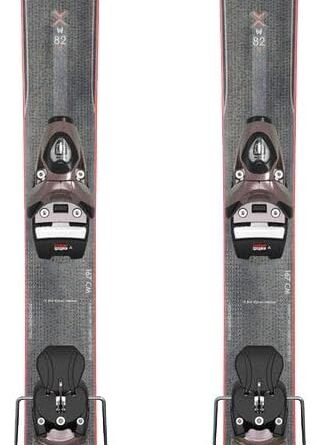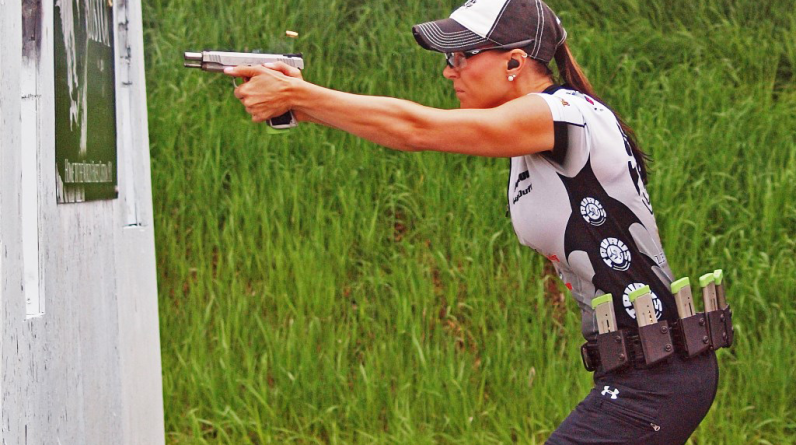
Hey there! Are you looking to up your shooting game? Well, you’ve come to the right place. In this article, we’re going to explore some helpful tips on how to improve your shooting stance and grip. Whether you’re a newbie or a seasoned shooter, these tips will surely elevate your skills to the next level. So, let’s dive right in!
If you’re wondering how to improve your shooting stance and grip, don’t worry, we’ve got you covered. In this article, we’ll provide you with five valuable tips that will make a world of difference in your shooting performance. From proper foot placement and body alignment to the correct grip on your firearm, these tips will enhance your accuracy and control. So, if you’re ready to take your shooting skills up a notch, keep reading to discover the secrets of improving your shooting stance and grip. You won’t want to miss out on these game-changing techniques!
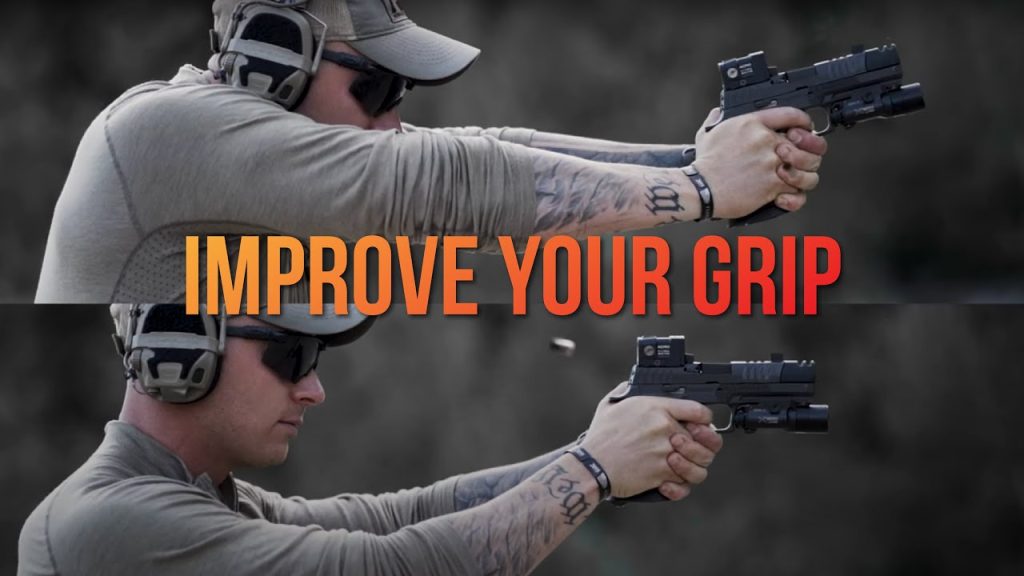
This image is property of i.ytimg.com.
Understanding the Importance of a Proper Shooting Stance
When it comes to shooting accurately and effectively, having a proper shooting stance and grip is crucial. Whether you are a beginner or an experienced shooter, mastering these fundamentals can greatly enhance your skills and overall performance. In this article, we will explore five practical tips for improving your shooting stance and grip, helping you achieve better accuracy and control.
Why is a proper shooting stance important?
A proper shooting stance is the foundation of good marksmanship. It enables you to maintain balance, stability, and control over your firearm. By adopting a correct shooting stance, you can better absorb recoil, minimize muzzle rise, and ensure consistent shot placement. Additionally, a well-balanced stance allows for quicker follow-up shots and reduces fatigue during extended shooting sessions.
The benefits of a correct shooting stance
An optimal shooting stance offers several benefits that directly impact your shooting performance. Firstly, it improves your overall accuracy by providing a stable platform for your aim. A solid base allows you to better control your weapon and decreases the chances of unwanted movement or sway. Secondly, a correct shooting stance promotes better shooting posture, reducing strain on your body and minimizing the risk of injury. Lastly, a well-established stance allows for quicker target acquisition and faster transition between multiple targets.
Common mistakes in shooting stances
Before diving into the tips for improving your shooting stance and grip, let’s first address some common mistakes shooters often make. One frequent error is having an improper foot placement. Your feet should be shoulder-width apart, parallel to the target, and your weight evenly distributed between both legs. Another mistake is a rounded or hunched back, which compromises your stability and makes it difficult to maintain a consistent sight picture. Finally, gripping the firearm too tightly or too loosely can also negatively affect your shooting accuracy and control.
Mastering the Fundamentals of a Good Shooting Stance
Achieving a good shooting stance involves understanding and implementing several key components. By focusing on these fundamentals, you can establish a stable foundation for your shooting technique and enhance both your accuracy and control.
The basic components of a good shooting stance
-
Positioning your feet: Start by placing your feet shoulder-width apart, with toes slightly turned inward. This creates a solid base and allows for better weight distribution and stability.
-
Balancing your weight: Ensure that your weight is evenly distributed between both legs. This helps maintain balance and stability while absorbing the recoil generated by each shot.
-
Aligning your body: Stand tall with a slightly forward lean from the waist. Your upper body should be relaxed but engaged, promoting increased control and minimizing unnecessary movement.
Establishing a stable base for better accuracy
The key to accuracy lies in maintaining a stable shooting platform. To achieve this, follow these steps:
-
Position your dominant foot: If you are right-handed, your dominant foot should be placed slightly back, with your toes pointing towards the target. Left-handed shooters should do the opposite.
-
Extend your arms: Straighten your arms towards the target, with a slight bend at the elbows. This allows for better control and absorbs the energy of recoil.
-
Ensure proper weight distribution: To maintain balance and stability, distribute more weight on the balls of your feet rather than your heels. This will help you absorb recoil more effectively.
Proper alignment of the body and arms
Proper alignment is essential for consistent shot placement. Focus on the following:
-
Align your shooting eye: Position your dominant eye directly behind the rear sight to achieve optimal sight alignment. This allows for better accuracy and target acquisition.
-
Align your arms and shoulders: Your support hand should be positioned slightly forward and under the trigger hand. Both arms should form a straight line with your shoulders, providing a stable shooting platform.
-
Relax your grip: Maintain a firm and consistent grip on the firearm without squeezing too tightly. This allows for better control and mitigates unnecessary movements.
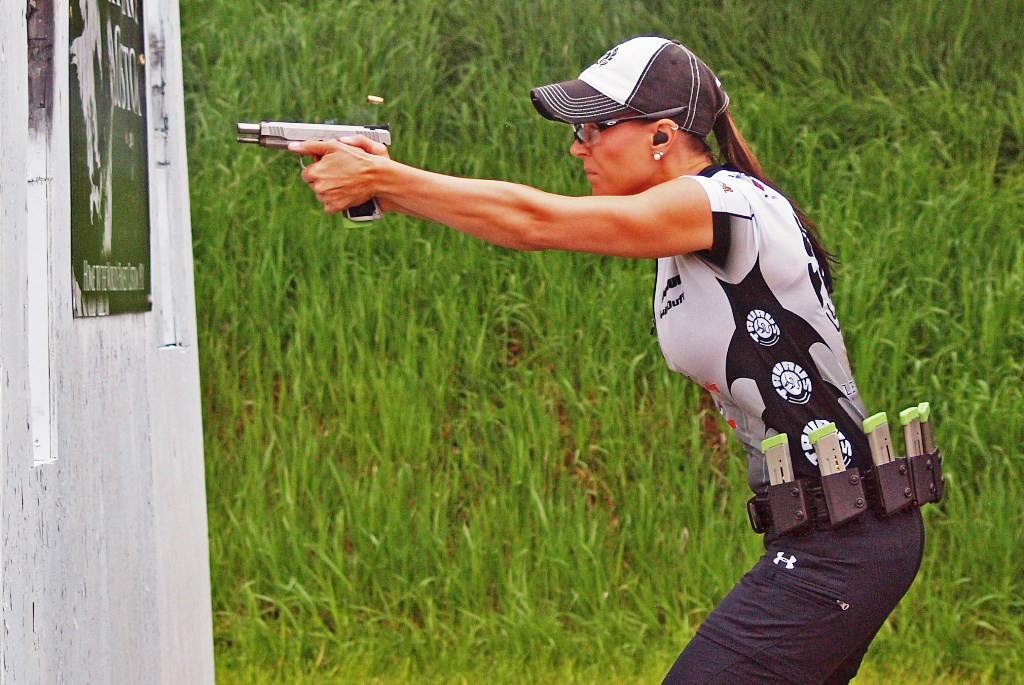
This image is property of www.blog.thegunsandgearstore.com.
Exercises and Drills to Improve Your Shooting Stance
To enhance your shooting stance, it is essential to strengthen the muscles involved and develop muscle memory. Incorporating specific exercises and drills into your training routine can significantly improve your shooting stance and overall performance.
Balance and weight distribution exercises
Improving your balance and weight distribution helps maintain a stable shooting stance. Here are two exercises to try:
-
Single-leg balance: Stand on one leg while maintaining balance for 30 seconds. Repeat with the other leg. This exercise improves stability and strengthens the muscles needed for a solid shooting foundation.
-
Weighted squats: Holding a dumbbell in each hand, perform squats while focusing on maintaining proper weight distribution. This exercise strengthens your legs and core, enhancing stability during shooting.
Building muscle memory through repetition
Developing muscle memory is crucial for consistent shooting performance. Practice these drills to reinforce proper shooting stance:
-
Dry firing practice: Unload and clear your firearm, then practice your shooting stance in front of a mirror. Focus on aligning your body, arms, and grip correctly. This drill helps build muscle memory without live ammunition.
-
Slow-motion shooting: Using an unloaded firearm, practice a smooth and controlled trigger pull while maintaining a proper stance. Focus on following through and resetting the trigger between shots. This drill helps reinforce proper technique and build consistency.
Dynamic drills for enhancing stability
Dynamic drills can simulate realistic shooting scenarios and challenge your stability. Here are two exercises to incorporate into your training routine:
-
Shooting on the move: Set up multiple targets and practice shooting while moving laterally or diagonally. Maintain a solid shooting stance while engaging each target. This drill helps improve stability while shooting on the go.
-
Rapid target transitions: Set up multiple targets at different distances. Practice quickly acquiring each target and engaging them accurately. This drill challenges your stability and tests your ability to maintain a proper shooting stance during quick transitions.
Exploring Different Types of Grips for Better Control
In addition to a proper shooting stance, having a correct grip on your firearm is crucial for achieving optimal control over your shots. Different grip styles may be more suitable for various shooting scenarios. It is essential to understand the importance of a proper grip and find the one that works best for you.
The importance of a proper grip
A proper grip allows you to control the firearm effectively, manage recoil, and ensure consistent shot placement. With a correct grip, you can minimize muzzle rise, reduce follow-up shot times, and increase overall accuracy. It is crucial to find a grip that provides a firm hold on the firearm while maintaining comfort and control.
Different grip styles for different shooting scenarios
There are several grip styles commonly used by shooters, each with its advantages and applications. Here are three popular grip styles to consider:
-
Isosceles grip: In an Isosceles grip, both arms are extended directly towards the target, forming a triangle shape. This grip promotes a balanced shooting stance and provides excellent control for quick target transitions.
-
Weaver grip: The Weaver grip involves positioning your support hand with a bent elbow towards the target, while your dominant hand stretches out. This grip offers increased stability and better recoil control, making it suitable for precision shooting.
-
Modified grip: A modified grip is a combination of the Isosceles and Weaver grips. It involves a slight bend at the elbows of both arms and allows for better recoil management while maintaining good control and target acquisition speed.
How to find the right grip for you
Finding the right grip is a personal decision that depends on your shooting style, hand size, and comfort. Experiment with different grip styles and variations, and pay attention to how each one impacts your accuracy and control. Seek feedback from experienced shooters or firearm instructors who can offer guidance and recommendations based on their expertise.
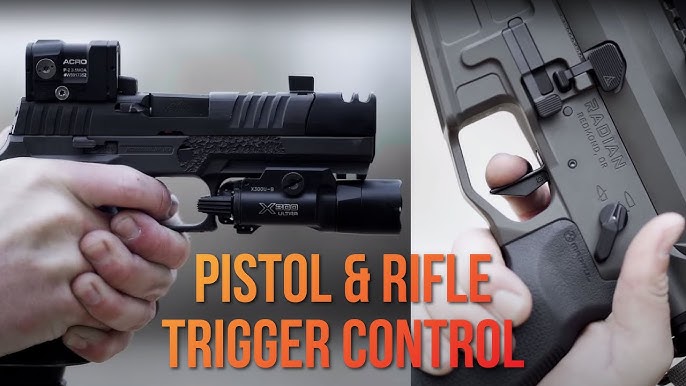
This image is property of i.ytimg.com.
Techniques for Improving Grip Strength
A strong grip is essential for maintaining control over your firearm, especially during extended shooting sessions or high-stress situations. Improving your grip strength can greatly enhance your shooting performance and accuracy.
Exercises to strengthen hand and forearm muscles
Incorporating specific exercises into your training routine can help strengthen your hand and forearm muscles, leading to better grip strength. Here are three exercises to try:
-
Hand grip squeezes: Invest in a hand grip trainer or use a stress ball. Squeeze the hand grip or stress ball repeatedly, progressively increasing the intensity as your grip strength improves. This exercise targets the muscles in your hand and forearm.
-
Farmer’s walks: Grab a pair of heavy dumbbells and walk a designated distance while maintaining a firm grip. This exercise not only strengthens your grip but also targets your entire body, promoting overall stability and control.
-
Towel pull-ups: Attach a towel to a pull-up bar and perform pull-ups while gripping the towel. This exercise strengthens both your grip and upper body muscles, improving overall shooting control.
Utilizing grip trainers and tools
Numerous grip trainers and tools are available that can help enhance your grip strength. Consider incorporating these options into your training regimen:
-
Hand grip trainers: These devices offer adjustable resistance to target specific grip muscles. Regularly using a hand grip trainer can help strengthen your grip and improve overall stability.
-
Wrist rollers: Wrist rollers consist of a weighted bar attached to a rope or chain. By winding the rope or chain around the bar using only your wrist and forearm, you can effectively improve grip strength and forearm muscle endurance.
-
Captains of Crush grippers: Captains of Crush grippers are high-quality hand grippers that come in various resistance levels. Utilize them to progressively increase grip strength, challenging yourself with higher resistance levels over time.
Maintaining grip control under pressure
In stressful situations, maintaining grip control can be challenging. To better prepare for these scenarios, practice shooting drills that incorporate pressure and simulate real-life challenges. Gradually increase the difficulty of the drills, placing an emphasis on maintaining a strong and controlled grip. By training under pressure, you can condition yourself to perform at your best in high-stress shooting scenarios.
Ergonomics and Customization for Enhanced Comfort
Ergonomics play a crucial role in shooting performance. Understanding how to adjust and customize your firearm for maximum comfort can greatly improve your shooting stance and grip.
Understanding the role of ergonomics in shooting
Ergonomics focuses on designing equipment and tools to fit the user’s needs and enhance their overall experience. In shooting, ergonomic considerations are necessary to optimize comfort, control, and reduce the risk of injury or fatigue.
Adjusting your firearm for a personalized fit
Modern firearms often feature adjustable components that allow shooters to customize the fit to their liking. Consider the following adjustments to achieve a personalized fit:
-
Length of pull: Adjusting the length of pull can optimize the distance between the trigger and your shoulder, ensuring a comfortable and consistent shooting position.
-
Stock height and comb height: Altering the stock height and comb height can improve cheek weld and sight alignment, enhancing control and accuracy.
-
Grip size and shape: Select a grip size and shape that fits your hand comfortably. An ergonomic grip reduces fatigue and improves your ability to control the firearm.
Accessories and modifications for improved grip
Various accessories and modifications are available that can enhance comfort and grip control. Consider the following options:
-
Grip sleeves: Grip sleeves made of rubber or other textured materials can improve grip traction and provide additional comfort during shooting. They can help reduce unnecessary movement and enhance control.
-
Extended or textured magazine releases and slide stops: Customizing your firearm with extended or textured magazine releases and slide stops can aid in rapid reloads and manipulation during high-stress shooting scenarios.
-
After-market grip panels: Many firearms allow for the installation of aftermarket grip panels. Explore different options to find panels that provide a more comfortable and secure grip for your specific hand size and shape.
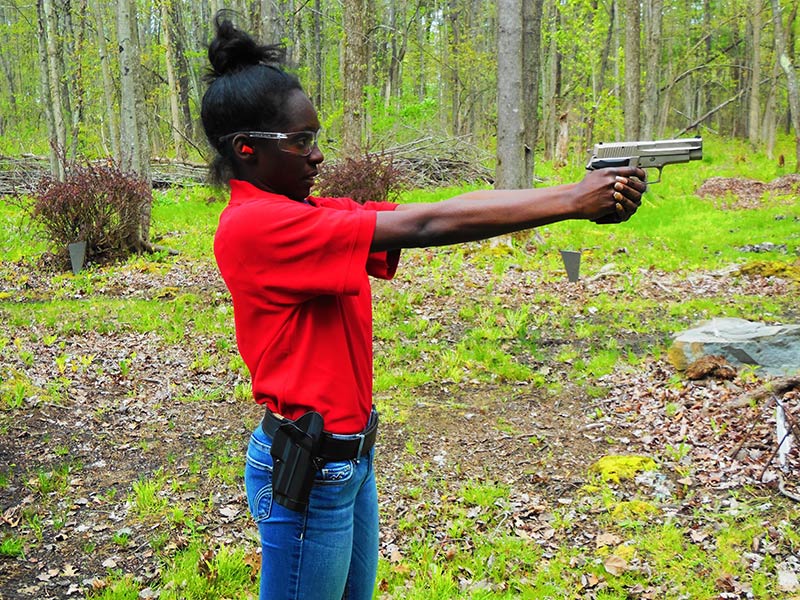
This image is property of americanhandgunner.com.
Developing a Consistent and Repeatable Stance-Grip Combination
Consistency is crucial for improving shooting performance. Developing a systematic approach to your shooting stance and grip can have a significant impact on shot placement and overall accuracy.
The importance of consistency in shooting performance
Consistency is the key to achieving reliable and repeatable shooting results. By establishing a consistent stance-grip combination, you can reduce variables and focus on other aspects of shooting, such as sight alignment and trigger control.
Creating a systematic approach to stance and grip
To develop a consistent and repeatable stance-grip combination, follow these steps:
-
Practice the fundamentals: Spend dedicated practice time focusing on the basic components of your shooting stance and grip. Mastering the fundamentals will allow you to establish a strong foundation for further improvement.
-
Record and review your performance: Use your smartphone or camera to record your shooting sessions. Review the footage to identify any inconsistencies or areas for improvement in your stance and grip.
-
Make gradual adjustments: Based on your observations, make small adjustments to your stance and grip over time. Assess the impact of each adjustment and refine your technique as necessary.
Reviewing and refining your technique
Regularly assess and refine your shooting technique to continually improve your stance and grip. Seek feedback from experienced shooters, participate in shooting competitions, or enroll in training courses that focus on refining shooting fundamentals. Utilize the insights gained from these experiences to further enhance your performance and shooting skills.
Addressing Common Challenges and Troubleshooting
Throughout your journey to improve your shooting stance and grip, you may encounter various challenges. Understanding how to address these challenges and troubleshoot typical issues is essential for continued progress.
Dealing with recoil and muzzle rise
Recoil and muzzle rise can significantly impact your shooting performance. To address these challenges, consider the following techniques:
-
Proper grip and stance: Ensure you are maintaining a firm and consistent grip while adopting a correct shooting stance. By absorbing recoil properly, you can minimize muzzle rise and maintain control over your firearm.
-
Recoil management techniques: Experiment with different recoil management techniques such as gripping the firearm higher, pushing forward with your support hand, or focusing on a smooth trigger pull. Find the techniques that work best for you to minimize the impact of recoil.
Correcting grip and stance-related issues
Identifying and correcting grip and stance-related issues is essential for improving accuracy and control. If you are experiencing consistency problems or noticing erratic shot placement, consider the following troubleshooting tips:
-
Slow down and be deliberate: When practicing, focus on each component of your shooting stance and grip. Slow down your movements, be deliberate with your actions, and ensure that you are properly aligning your body, arms, and grip.
-
Seek feedback and guidance: Engage with experienced shooters or professional trainers who can offer feedback on your grip and stance. They can provide valuable insights and suggest specific techniques or adjustments that can help rectify any issues you may be facing.
Overcoming discomfort or fatigue during long sessions
Fatigue and discomfort can be significant hurdles during prolonged shooting sessions. To overcome these challenges, consider the following tips:
-
Proper hydration and nutrition: Stay properly hydrated and maintain a healthy diet to optimize your energy levels during shooting sessions. Dehydration and an inadequate diet can contribute to fatigue and reduced focus.
-
Breaks and rest: Take frequent breaks during extended shooting sessions to rest and recover. This will help prevent muscle fatigue and maintain better overall shooting performance.
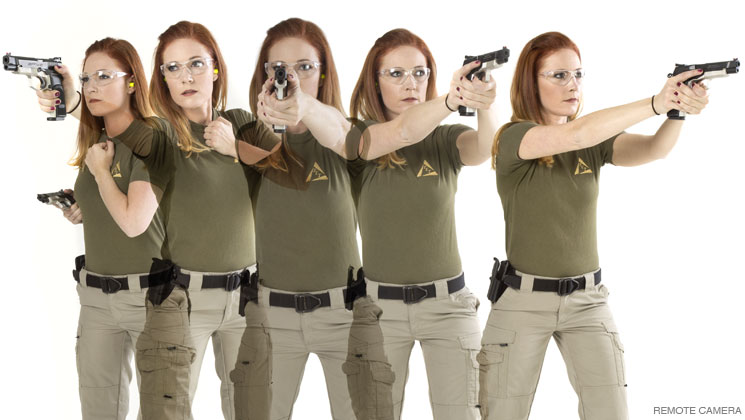
This image is property of www.shootingillustrated.com.
Seeking Professional Guidance and Training
To ensure you receive the best possible guidance and training in improving your shooting stance and grip, consider seeking professional instruction. Professional trainers provide expert knowledge, personalized feedback, and specialized drills that can target specific areas for improvement.
Benefits of seeking professional shooting instruction
Professional shooting instruction offers numerous benefits for both beginner and experienced shooters. These benefits include:
-
Enhanced safety: Professional trainers prioritize safety, teaching proper handling and maintenance of firearms, and emphasizing safe shooting practices.
-
Accelerated learning: Professional trainers can identify areas for improvement specific to your shooting stance and grip. They can provide tailored drills and exercises to help you progress quickly.
-
Critical feedback: Experienced instructors provide valuable feedback on your shooting technique, stance, and grip. This constructive criticism allows you to make necessary adjustments and maintain proper form.
Finding qualified trainers and resources
When searching for qualified trainers and resources, consider the following:
-
Firearm instructors and shooting ranges: Reach out to local shooting ranges or firearm instructors in your area. Ask for recommendations or inquire about their training programs and qualifications.
-
Online resources: Utilize reputable online platforms focused on shooting sports and firearm training. These resources often provide instructional videos, articles, and forums where you can connect with experienced shooters and trainers.
-
Shooting competitions and clubs: Participate in shooting competitions or join shooting clubs. These activities can help you connect with experienced shooters who may be able to provide guidance or recommend local trainers.
Taking advantage of personalized feedback and guidance
Once you have found a qualified trainer, take full advantage of the personalized feedback and guidance they offer. Actively seek their advice and incorporate their suggestions into your training routine. The insights gained from professional instruction can significantly accelerate your progress and help you overcome any challenges you may face in improving your shooting stance and grip.
Conclusion
Mastering a proper shooting stance and grip is essential for improving your shooting skills and performance. By understanding the importance of a correct shooting stance, exploring different grip styles, strengthening your grip, and seeking professional guidance, you can significantly enhance your control, accuracy, and overall shooting experience.
To improve your shooting stance and grip:
- Concentrate on the basics of a good shooting stance.
- Establish a stable base for better accuracy.
- Focus on proper alignment of the body and arms.
- Incorporate exercises and drills to improve your stance.
- Explore different grip styles for better control.
- Strengthen your grip through exercises and tools.
- Pay attention to ergonomics and customization for comfort.
- Develop consistency in your stance-grip combination.
- Troubleshoot common challenges and seek professional guidance.
- Practice and continuously refine your technique.
By applying these five tips consistently with a friendly tone, you will be on your way to becoming a better shooter with an improved shooting stance and grip. Remember, practice makes perfect, so get out there and start honing your skills. Happy shooting!






